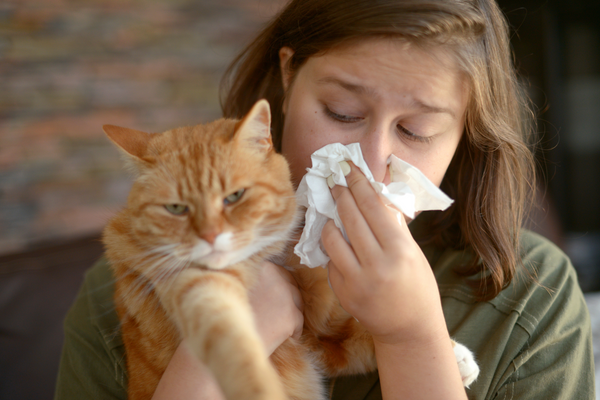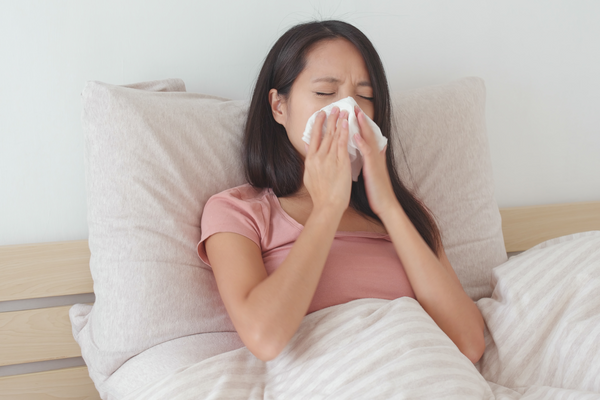What’s That Smell? Avoid These Big Bad Chemicals Found in Common Household Cleaners

For so many people, the scent of “clean” might be described as a Hawaiian breeze, or maybe cedarwood, French lavender, or even a floral garden after the rain. Many conventional cleaning products and laundry detergents these days boast elegantly named scents similar to these descriptions. And yes, these products do often smell sweet and appealing. They momentarily mask funky odors and can have your place smelling fresh and fragrant in minutes. But we all know that it’s impossible to bottle the scent of a real breeze from the Hawaiian islands, or to actually capture the natural fragrance of a flower garden after a rainstorm. Unfortunately, if you’re looking for answers on the ingredients list on a bottle of conventional cleaning product, you won’t find anything other than the word “fragrance.”
So, what’s that smell?

Simply put, “fragrance” is actually an umbrella term that the cleaning industry uses on ingredients lists that discloses only that there are unnamed chemicals in the product. Which is not helpful for avid-label readers, allergy or asthma sufferers, or consumers who are looking to make better choices about the products that they use in their home and around their children and pets. The use of this umbrella term also gives big brands an opportunity to add in cost effective, but toxic, big bad chemicals to their products to make a scent that is “better” than natural – but that is also completely chemically unrecognizable to a naturally occurring scent, such as lavender or cedarwood. The truth is that any one artificial fragrance can be made up of potentially hundreds, or even thousands, of different ingredients, including phthalates – which have been linked to a number of hazardous health conditions, including reproductive malformation, liver and breast cancers, and diabetes – as well as a number of hormone disrupting synthetic musks, including galaxolide, tonalide, musk xylene, and musk ketone.
As consumers, we assume that these products are safe. After all, it’s likely that we picked them up from the cleaning aisle in our local supermarket. How bad could they possibly be? But according to a study conducted by the National Institute of Environmental Health Science, fragrances used in household products are associated with headaches, sneezing, infant diarrhea and vomiting, asthma and exacerbations, chest tightness, wheezing, respiratory irritation, thyroid disorders, irritant and contact dermatitis, and more. Yikes. It’s also important to note why fragrances are used in cleaning products. There are really only two reasons: The first is to intentionally fragrance a product so that it’s more appealing to consumers. The second is to use synthetic fragrances to mask the odor of chemicals in product formulas that are intrinsically unpleasant. For example, a sweet synthetic floral fragrance may be used to cover up the gross “rotten egg” smell associated with surfactants, chemical compounds that are regularly used in kitchen and bathroom cleaning products.
Alarmingly, a 2011 study done by the University of Washington found that scented laundry items contain carcinogens that waft through vents, potentially raising cancer risk. For the study, researchers enlisted homeowners to volunteer their washers and dryers, which the team scrubbed clean beforehand. The researchers ran a regular laundry cycle for three scenarios in each home: once without any detergent, once with a scented liquid laundry detergent, and the last with both scented detergent and a leading brand of scented dryer sheets. Their analysis found more than 25 volatile air pollutants, including the carcinogens acetaldehyde and benzene. Benzene is known to cause leukemia and other blood cancers, according to the American Cancer Society. Acetaldehyde has been shown to cause nasal and throat cancer in animal studies.
The Volatile Organic Compounds (VOCs) emitted by fragranced products, including laundry and cleaning products, can contribute to poor indoor air quality and are associated with a variety of adverse health effects. When consumers use a fragranced product, everyone in the home, including children and pets, will inhale or absorb some of those toxic fragrance chemicals into their bodies. Big bad chemicals like phthalates, for example, have been detected in blood, urine, and fat tissue in nearly every person tested in various studies conducted on the safety of a number of chemicals that are used to create fragrances. You may be wondering how this could ever be allowed in the first place. Well, it’s sort of a loophole. In the U.S., fragrances in household products are considered a trade secret under the Fair Packaging and Labeling Act of 1966. Because the chemical formulas of fragrance blends are considered trade secrets, companies aren't required to list their ingredients, but instead are able to merely label them as containing "fragrance." While this is frustrating, keep in mind that even if these products did list the hundreds of ingredients that make up their elegantly named fragrances, it wouldn’t make them any safer.
How do fragrance chemicals affect the environment?
The toxic chemicals that fragrances are made out of are an often-overlooked source of pollution. After using a cleaning product that contains fragrance in your home, the chemicals may get washed down the drain and deposited into the environment, or may seep into the ground and contaminate the Earth’s soil. Many of these compounds are not filtered out by water treatment facilities and end up in waterways. These materials accumulate in aquatic wildlife and contaminate our water supply and the food chain.
Fragrances by design get into the air. In order to detect an odor, molecules of that substance must be airborne. Fragrances are complex mixtures of VOCs formulated to have a specific scent. Once in the air, they break down, mix with other pollutants, and form new compounds that are often more irritating or allergenic than the original substance. VOCs are associated with exacerbating respiratory diseases such as asthma and COPD.
There is a better way.
To avoid these big bad chemicals, the best way to start is by reducing the exposure in your home. Begin by spring cleaning your cleaning and laundry products, and rid your cupboards of any products that include “fragrance” in the ingredient list.
Replace all of your conventional cleaning products with one bottle of Vital Oxide. It can be used to clean, disinfect, sanitize, remove mold & mildew, eradicate allergens, and deodorize. Our all-in-one formula is fragrance-free, bleach-free, phthalate-free, VOC-free, allergen-free, and is made with a powerful, yet gentle formula that’s safe to use around the whole family, kids and pets included. Vital Oxide can be used to kill 99.9% of viruses and bacteria, including SARS-CoV-2, the coronavirus that causes COVID-19. Vital Oxide’s main ingredient, chlorine dioxide, breaks down into water, oxygen, and common table salt after use, making it a superb environmental choice. It also breaks down quickly, which means it won’t harm the Earth’s soil or add toxic deposits into the ground and water supply.
Rather than using harmful scented laundry detergents, opt for a fragrance-free detergent and just say “no” to scented softeners. Our Anti-Allergen Laundry Detergent is plant-based and 100% biodegradable, making it an incredibly environmentally friendly choice. It’s also hypoallergenic, and does not contain fragrance, dyes, or perfumes. And while it’s gentle on household washables, it’s powerful enough to remove even the strongest odors.
Sure, we could make our products smell like a rainforest kiss (whatever that is!), lavender, lemon zest, or anything really. But we choose not to. Instead, our revolutionary formulas destroy odors instead of covering them up. At The Ecology Works, we believe in creating products that are better for your family and better for the planet.
Learn more about the science behind our products, as well as tons of great tips on cleaning, disinfecting, deodorizing, reducing allergens, and more. If you have any questions, please Contact Us.




